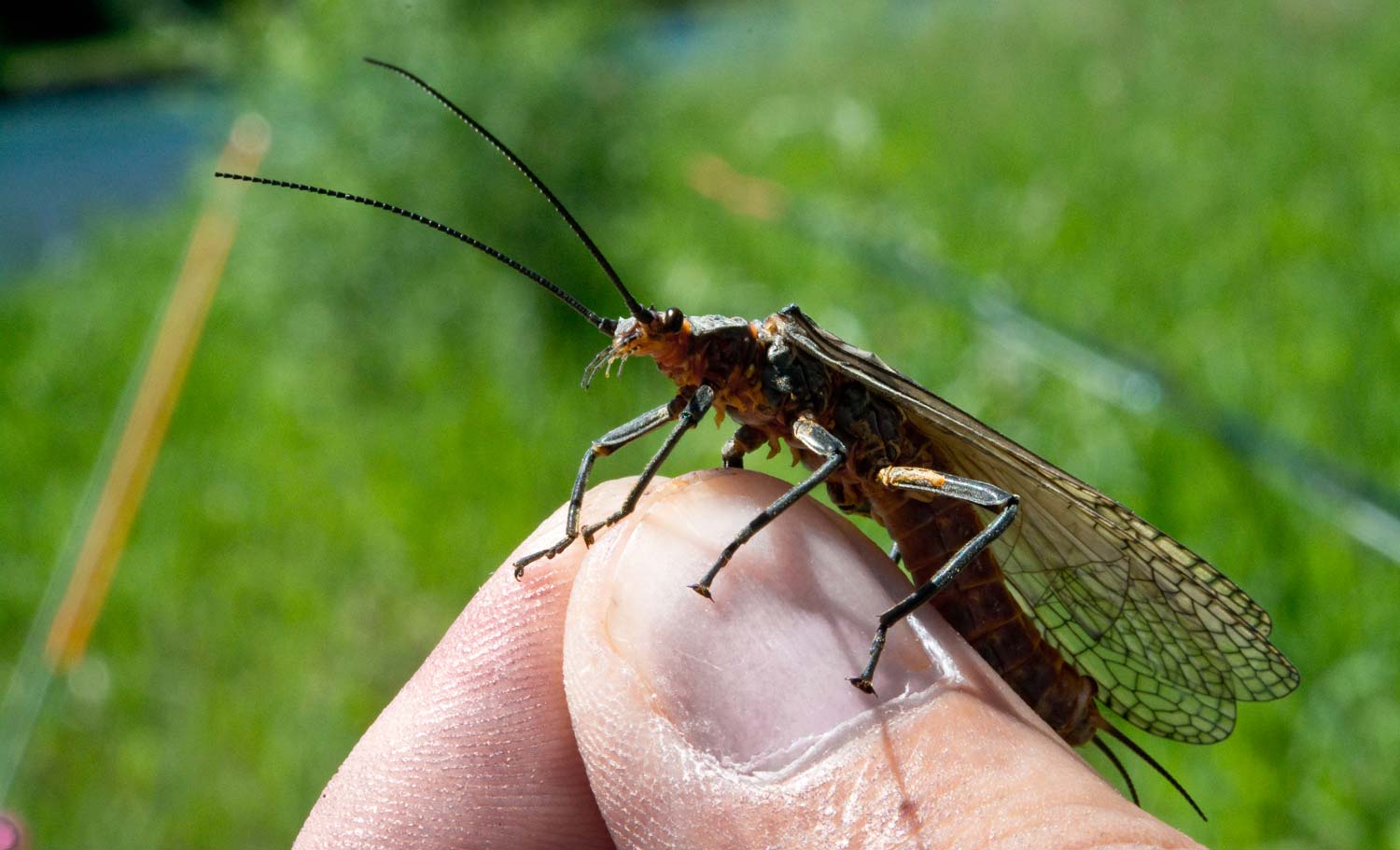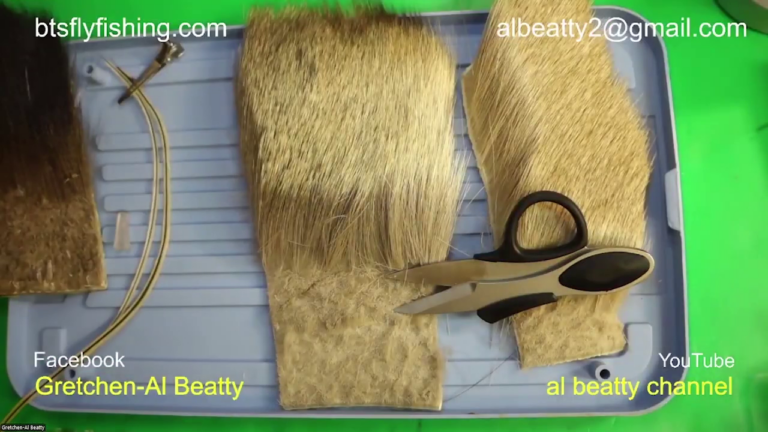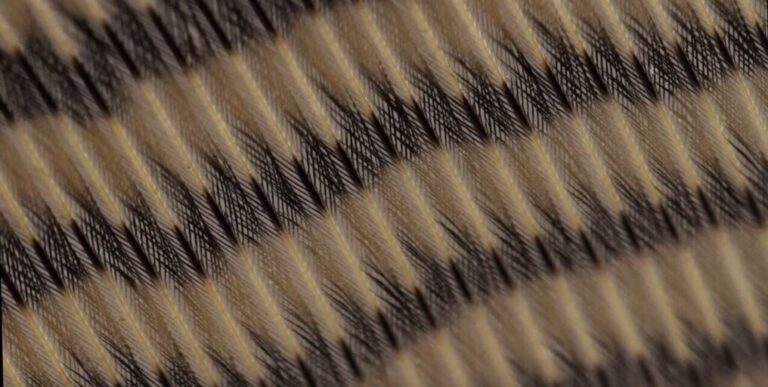Stonefly Life Cycle
By Mark Bachman, FlyFishUSA.com

Stone flies are a diverse family of insects that are adapted to well oxygenated streams and rivers and cannot survive in polluted water.
Stone fly nymphs have fixed gills that can only extract oxygen in clean moving water. If trapped in still stagnant water, they die quickly.
Most stone flies crawl out of the water to hatch, usually on rocks or shrubbery. The normal procedure is for stone fly nymphs to migrate to shore to hatch. This activity is attractive to trout and salmonids.
Some smaller species will hatch in the middle of the river at the water’s surface much like mayflies.
Nymphs like giant stone flies live in the rivers for as long as three years before they hatch into winged adults. They are attractive to trout in several sizes, almost year-round.
General Stonefly Movement
As the stone fly nymphs grow they must take over a larger territory. The redistribution of these territories usually happens in masses with many aquatic insects changing territory at the same time. This is called a behavioural drift and commonly happens immediately after sundown.
The largest behavioural drifts of most stone fly nymphs occur September through May. These mass drifts (or shifts) of insects occur during the twilight hours of the morning and late evening.
During these periods stonefly nymphs are moving down stream. Many are caught in the currents and swept downstream out of control. Trout target on these vulnerable treats and will feast until gorged.

You need to carry patterns in many different weights to cover different water speeds and depths. The flies we will cover all of the subsurface “giant stone fly” nymph activity.
There are patterns such as the Little Golden Stone and the Bead Head Rubber Leg Hare’s Ear that will cover many smaller species as well.

Most anglers are aware of the local hatches of salmonflies and golden stoneflies.
Several weeks before the hatch, salmon flies and golden stones will start to migrate to staging areas along the banks. No other occurrence in our rivers and streams will produce a feeding frenzy like the migration of big stone fly nymphs.
Even the largest trout find it impossible to refuse a big stone fly nymph fished deep along the bottom. The peak of this activity is the last two weeks before the hatch and fly fishermen have been fishing these hatches for over 50 years.
Fewer anglers are aware of the other hatches of stone flies that start as early as February, and some hatches are going on in August. These various hatches range in size from less than one-half inch to one and one-half inches in length.
Colours range from black to bright yellow, and brown to olive. Some hatches are sparse, but others are measured in blizzards.
Most of the various species create behavioural drifts while nymphs and egg laying flights while adults distribute their eggs.


Unlike the better-known mayfly and caddis groups of aquatic insects, only the larger stoneflies create mass migrations, or behavioural drifts of nymphs, which meet specific fly patterns.
Usually, the right size of Gold Ribbed Hares Ear will work. On the average the egg-laying activity is the most attractive part of the stonefly life cycle to trout. Fly selection is usually pretty simple. Stimulator type flies will get you into the game. Use the chart below:
| Emergence | Common Name | Body Colour | Size | When/How |
|---|---|---|---|---|
| February – April | Little Brown Stone | Brown to black | #14 – #18 | Dry, egg laying, afternoon |
| April – July | Skwala | Gold brown to dark brown | #10 – #12 | Dry, target riser, afternoon |
| April – July | Little Olive Stone | Olive – chartreuse | #14 – #18 | Dry, egg laying, afternoon |
| May – July | Golden Stone, Willow Fly | Golden yellow – golden brown | #4 – #10 | All day, nymph, dry |
| May – July | Salmonfly | Orange, brown, black | #2 – #12 | All day, nymph, dry |
| June – August | Yellow Sally | Yellow, yellowish tan | #12 – #16 | Dry, wet, egg laying, afternoon |
Stonefly Nymph/Dry Patterns
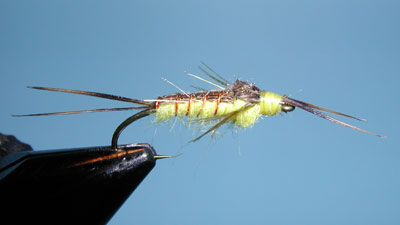
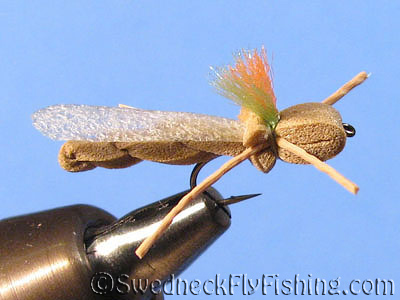

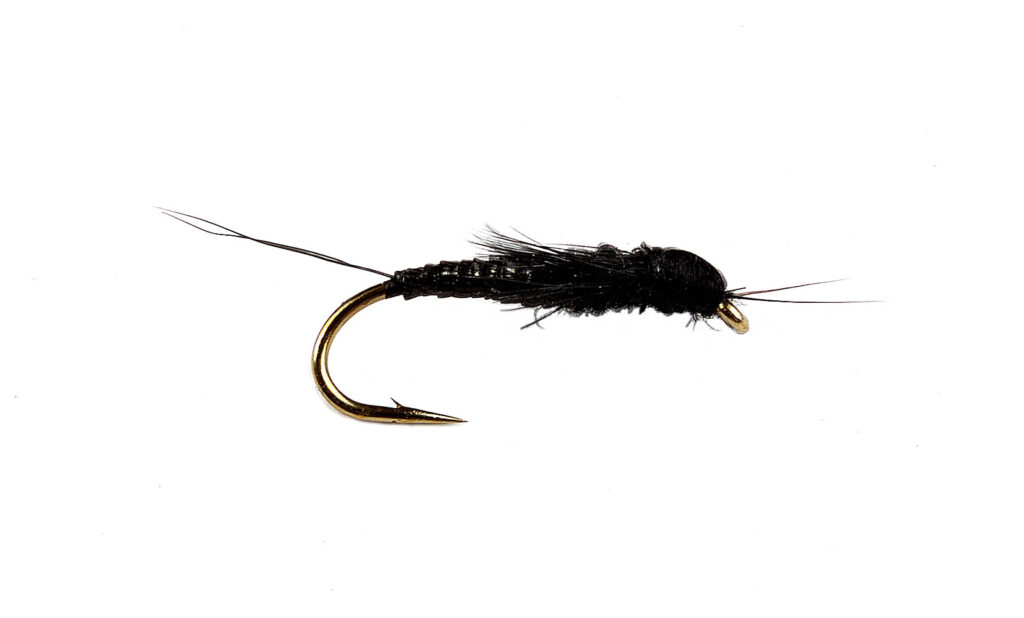
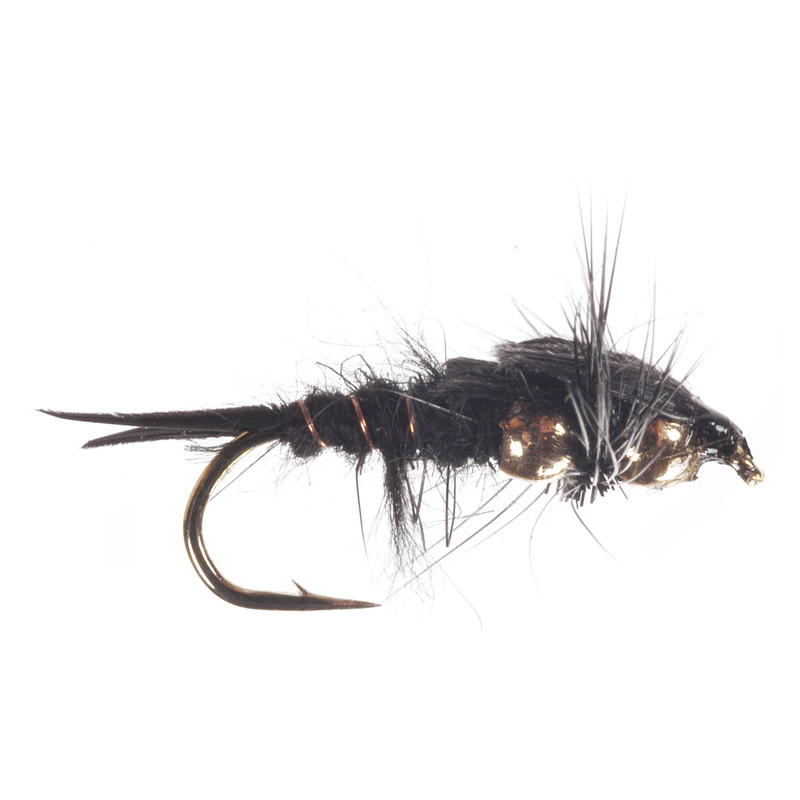
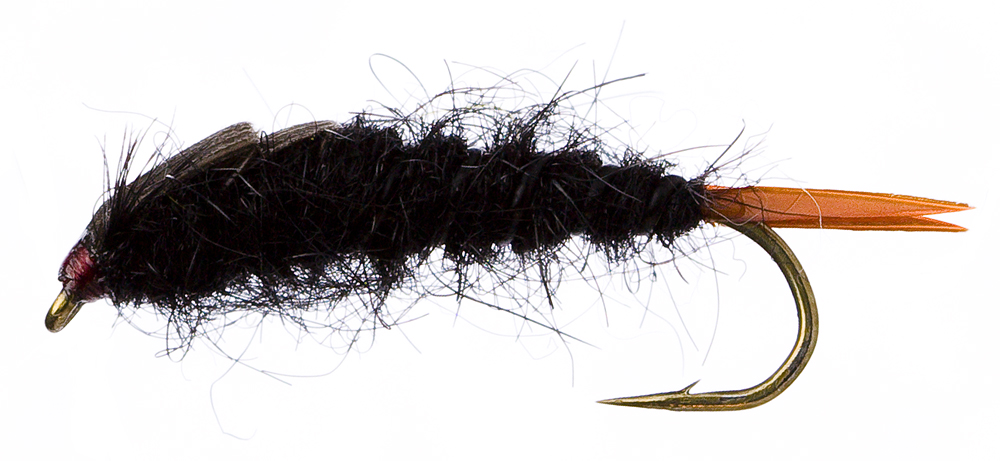
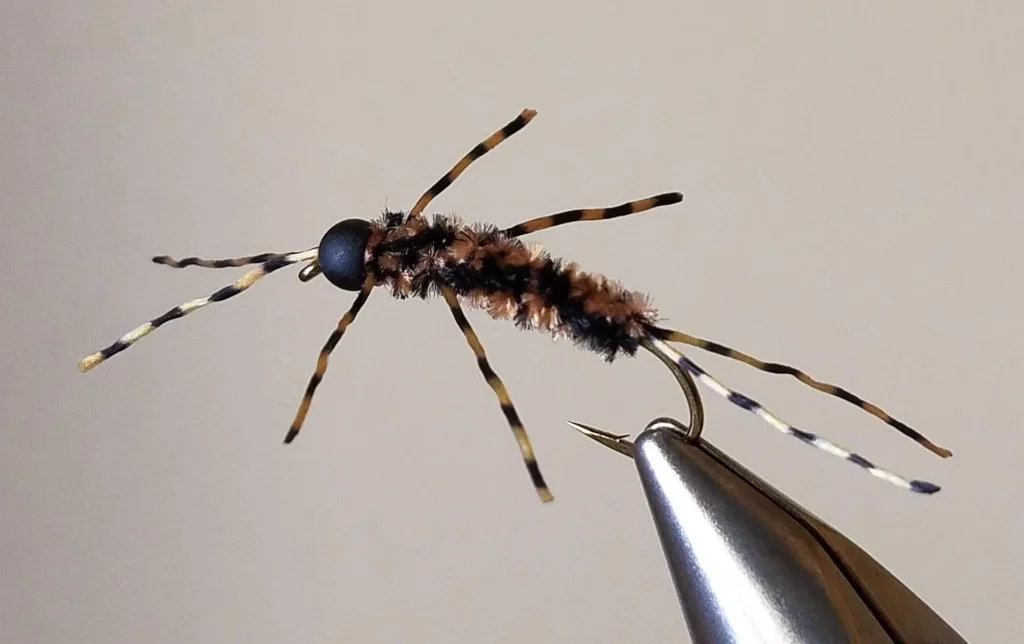
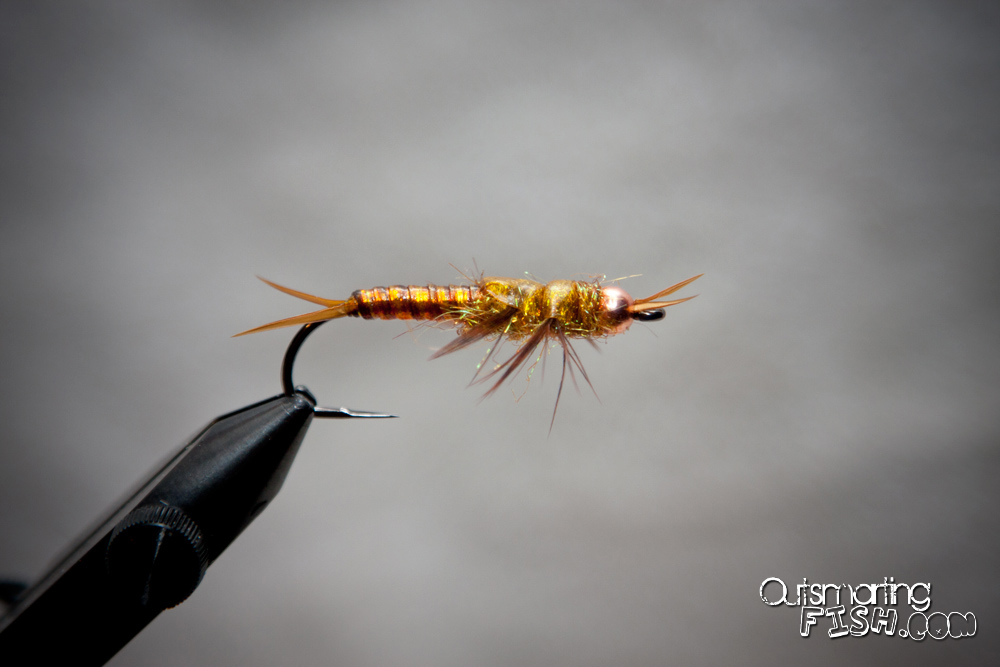
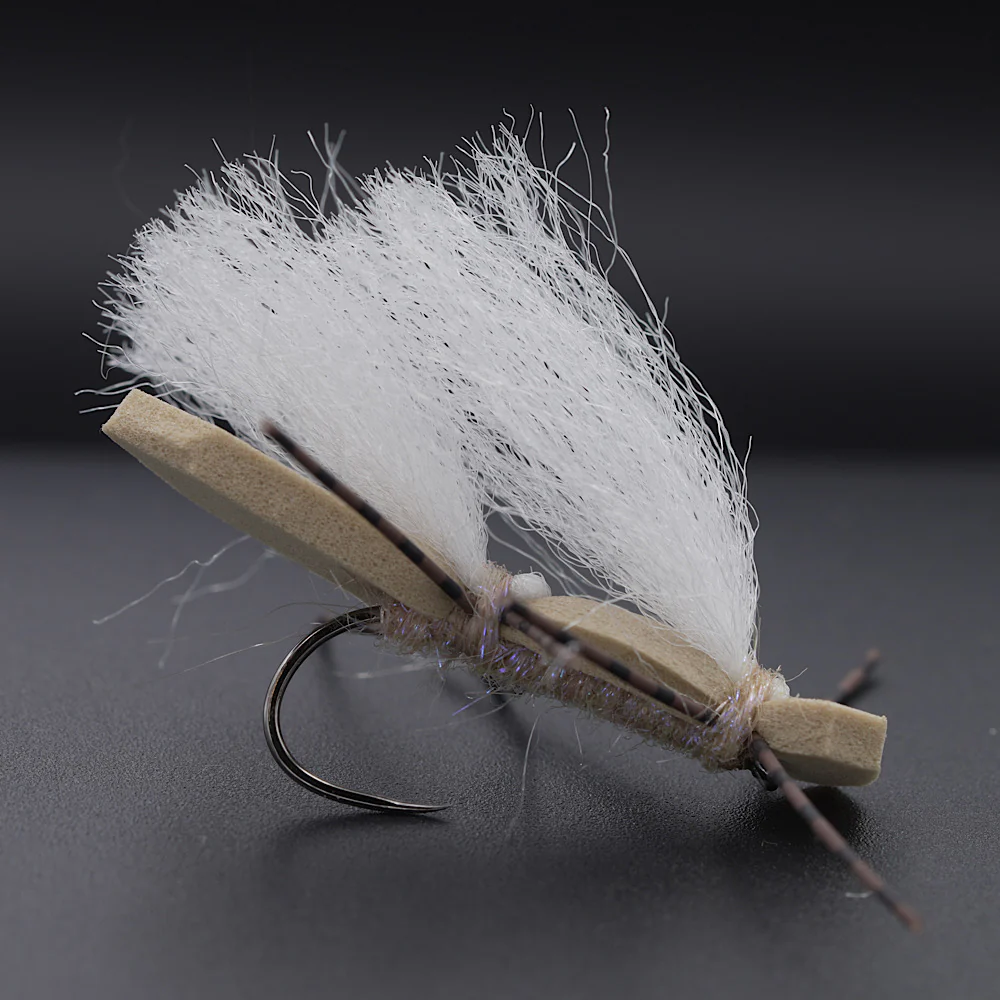
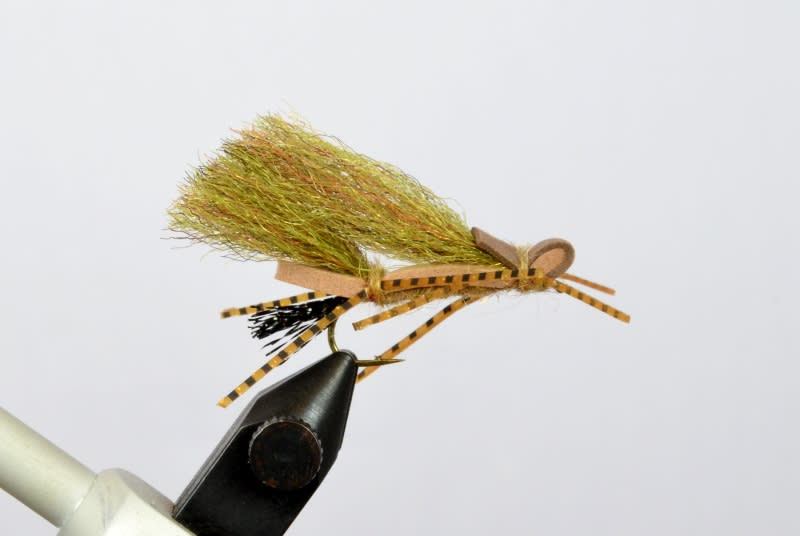

Bottom row: Girdle Bug or Pat’s Rubber Legs, Golden Stone, Henry’s Fork Foam Stone, Chubby Chernobyl, Prince Nymph
Biots for Stonefly Tails and Legs
By Rick Flink
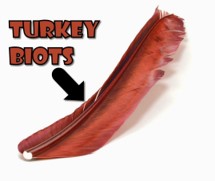



Turkey biots, derived from the primary flight feathers of the turkey, are versatile materials in fly tying. They are particularly useful for creating quill body flies, as they produce a clean, segmented body on both nymphs and dry flies.
Additionally, turkey biots can be employed for biot tails, legs, wing cases, and antennae. Despite their many uses, I primarily use them for quill bodies due to their length and softness, which prevent them from flaring out excessively.
Goose biots, or stripped goose, are another favourite material, especially for creating tails on flies like the Prince nymph.
These biots are essential for crafting stonefly nymph tails, legs, and antennae. Moreover, they are beneficial for forming bodies on spinners, midges, small dry flies, emergers, and nymphs.
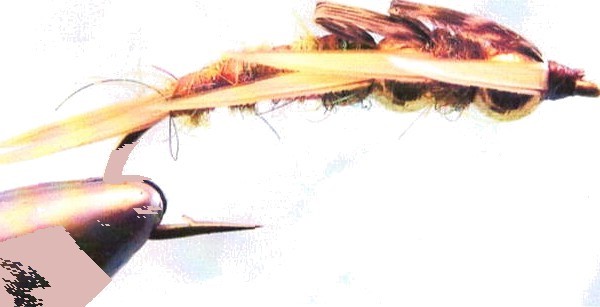
Related Posts
If you are interested in Rick Flink’s discussion and tips about goose and turkey biots, plus his excellent demonstration about tying the Double Bead Stonefly Nymph, you can watch it on Al Beatty’s BT’s Fly Tying Friday 17 May 2024.
